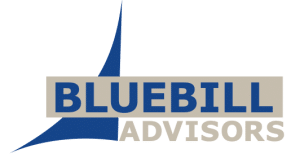Looking ahead to our conference in San Francisco, there are a number of sessions related to XML and content management, as well as some broader sessions on SaaS and content management platforms. David Guenette and I are working with Frank on the Content Technologies & Strategies (CTS) track as well as the Enterprise Publishing Technology (EPT) track. At this writing, we have the following sessions on tap (and you can see the whole grid here).
CTS-1: XML Strategies for Content Management
XML is fundamental to content management in two important ways–in how the content is tagged and structured and also in how content management systems interact with each other and with other enterprise applications. This session looks at how successful organizations make the best use of XML to support critical business processes and applications.
CTS-2: Enterprise Rights Management: Best Practices & Case Studies
As content management systems proliferate, so do the requirements for better and more sophisticated protection of that content. Simply stated, traditional protection is not enough–content needs to be protected persistently throughout complex business processes. Enterprise Rights Management platforms are answering these challenges, and this session uses case studies to help explain how this technology can help you meet your requirements.
CTS-3: SaaS – Is Software as a Service Right for You?
Software as a Service is exploding. Every day brings new offerings, new approaches, and new adopters. While content management SaaS offerings were once limited to Web Content Management, there are now SaaS offerings for document management, ECM, globalization, and XML-based component content management. This session looks at the big questions about SaaS and discusses whether SaaS might be right for you.
CTS-4: Platform Pros & Cons: SharePoint vs. Oracle vs.
Documentum vs. IBM
The long-predicted content management platform wars are upon us. Activity is everywhere–the introduction of SharePoint 2007, Oracle’s acquisition of Stellent, and EMC’s continued aggressive acquisition strategy, and IBM’s acquisition of Filenet. Will we all end up using one of these four platforms, and if we do, would this be a good thing? This session will offer the vendor, user, and industry perspective on this dominant issue.
CTS-5: Financial Content Collaboration with XBRL & RIXML
If you follow XML in the financial services arena, you undoubtedly know about XBRL, the emerging standard for financial data reporting that is really taking hold at the SEC and the regulatory agencies of EU countries. But a lesser known but equally intriguing standard is RIXML, the Research Information Exchange Markup Language. This session looks at these standards and the implications for the lifecycle of financial content.
EPT-1: Enterprise Publishing with XML (DITA)
June 2008 marks the third anniversary since DITA 1.0 was approved by the OASIS Technical Committee, and it is very safe to say that no XML-based publishing standard has had such rapid and far-ranging uptake. This session looks at some emerging uses of DITA while also discussing some of the positive business impact enjoyed by companies who have already adopted the standard.
EPT-2: Multi-Channel Publishing – How to Do It
Multi-channel publishing has become a mandate for nearly every organization. With the explosion in mobile devices, the mandate is becoming more complex. But along with this complexity comes opportunity to serve more users and more applications. This session offer case studies and practical advice for implementing multi-channel publishing to support your business objectives.
EPT-3: Digital Publishing Platforms: Magazines, Newspapers &eBooks
Amazon’s Kindle may be getting all of the publicity, but there is an explosion in new devices, technologies, and products for digital publishing–with implications for every traditional publishing medium. What are these new technologies, and what opportunities do they present to publishers? Hear from publishers and technologists, as well as some of the results of the Gilbane Group’s extensive research into how these technologies are reshaping the digital publishing landscape.

